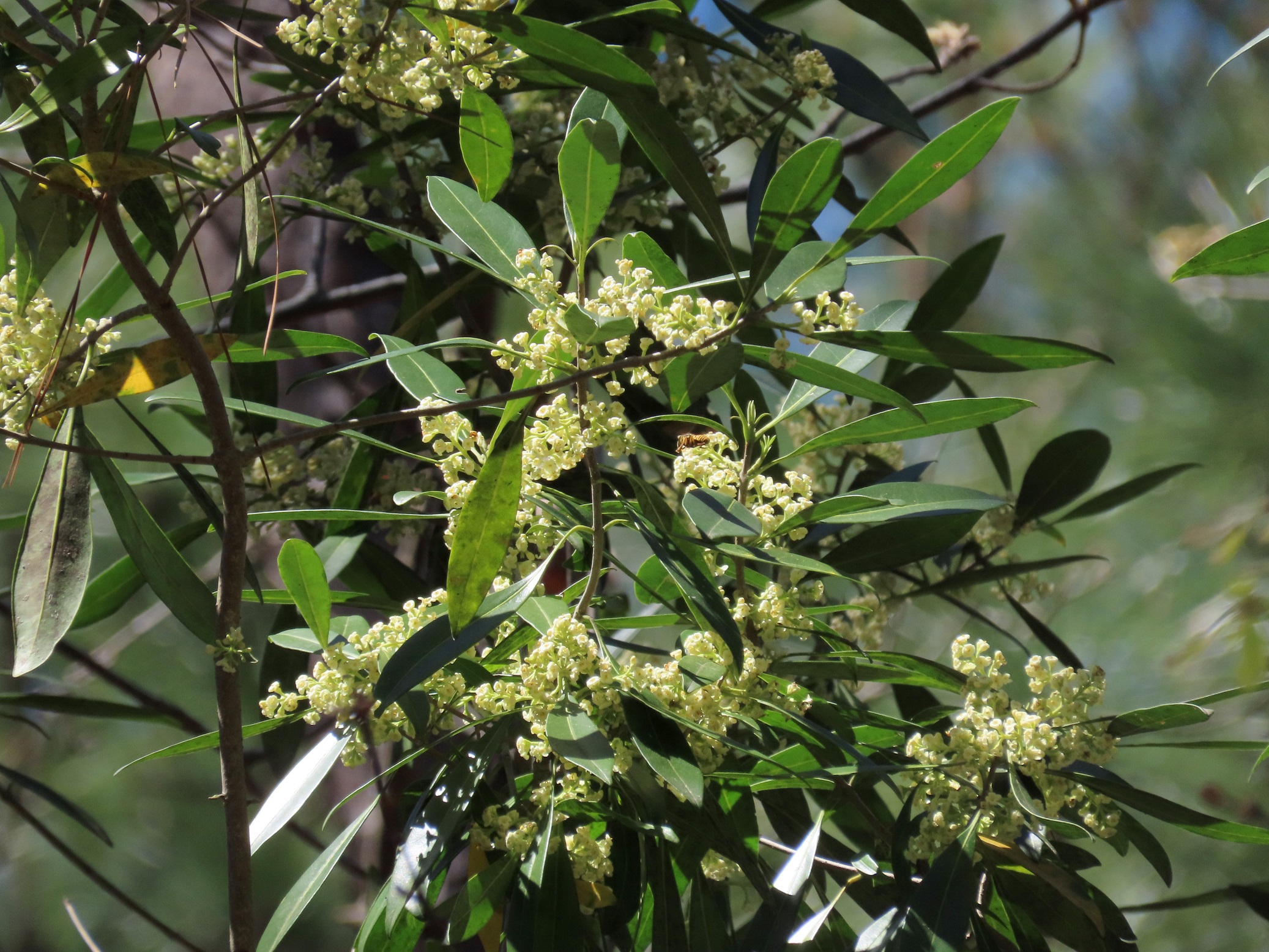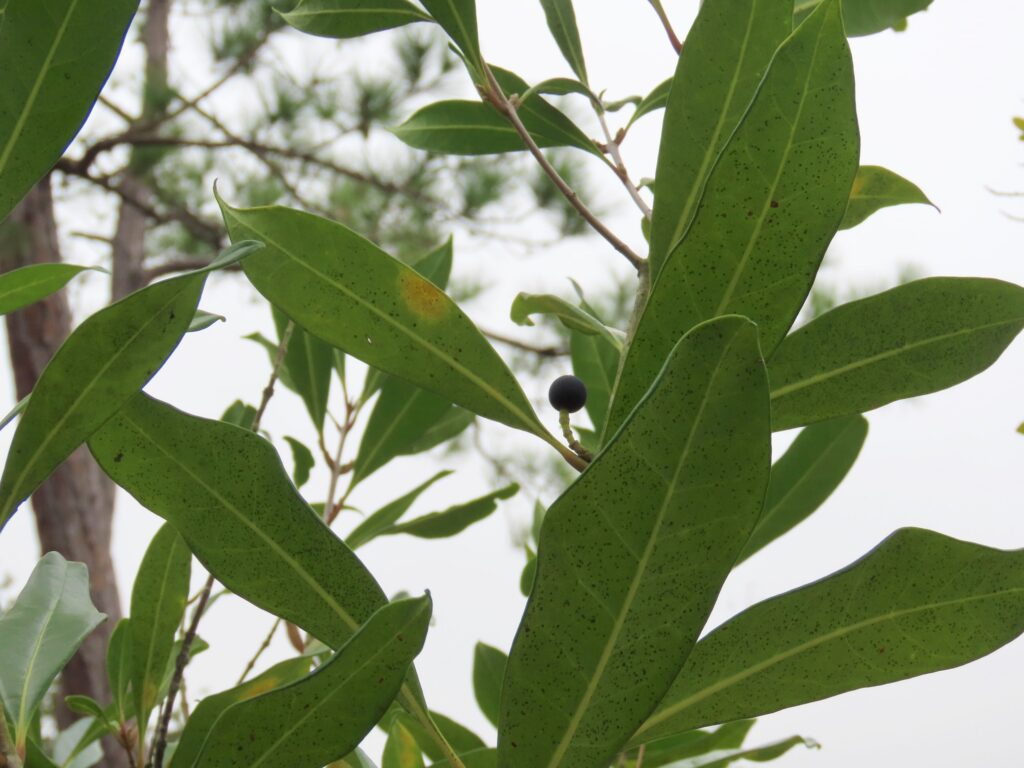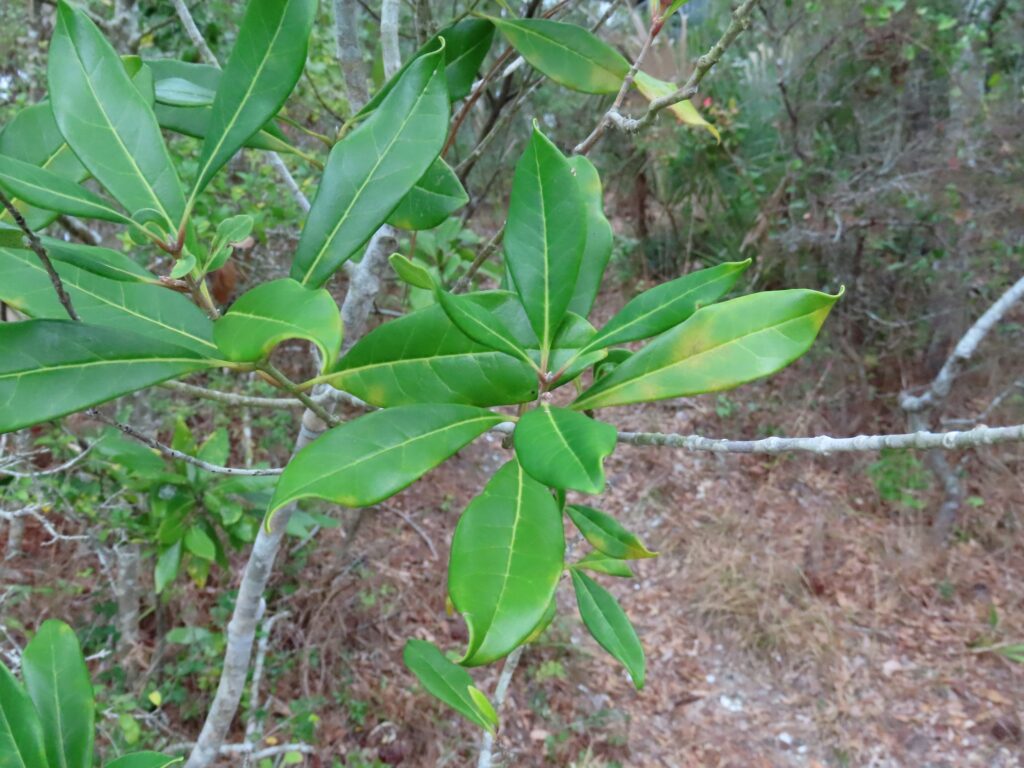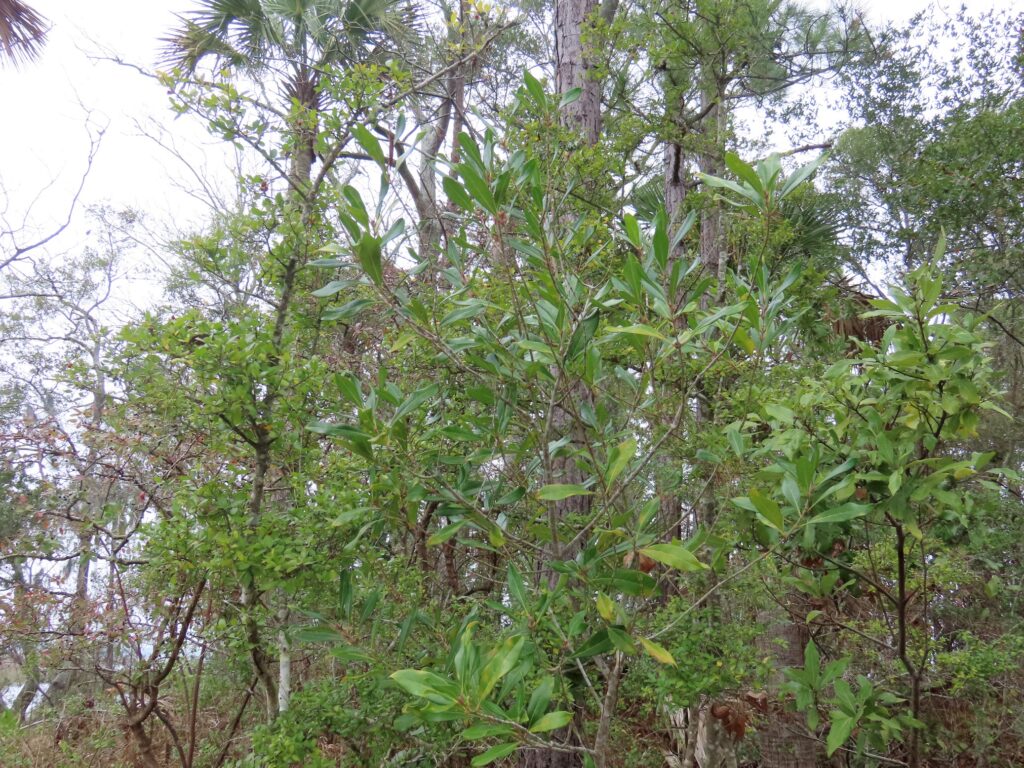




This week for Flora and Fauna Friday we have an uncommon member of the maritime forest understory, Wild Olive, or Devilwood (Catrema americana).
Wild Olive is found throughout the coastal plain of the Southeast and all of the South Carolina Lowcountry. It is not a rare plant but scarcely seen in the modern landscape. It can grow on a wild range of soil conditions but seems to do best on the fertile, sandy soils of the Sea Islands and the coastal plain sand ridges. It is especially well adapted to the true maritime forests of our barrier islands. Devilwood is thoroughly an understory plant, thriving in the dappled light filtering through a forest canopy. It grows as a tall shrub, usually ten to twenty feet high, with multiple stems and twisted trunks. Devilwood purportedly gets its common name from its dense wood, slow-grown and twisted, as anyone who attempts to carve it, or even just split it for firewood, is in for a devil of a time! Wild Olive is evergreen and, like other understory evergreens, has dark, inky-green leaves that are simple, elliptical in shape, waxy, and leathery. As a member of the Olive family, Oleaceae, its leaves are oppositely arranged and, like most Olives, it blooms with clusters of small, fragrant, cream-white flowers. These spring flowers are highly attractive to many of our native pollinators. Pollinated flowers mature into dark-blue drupes. These fruits are eaten by birds and the Wild Olive seeds spread in the process.
Devilwood is an excellent addition to most any coastal garden or yard. Its aforementioned flowers and fruits are attractive to pollinators and birds, and its dense evergreen foliage provides protective cover for many songbirds year-round. It accepts a variety of southeastern soils, is practically disease free, drought tolerant, and can tolerate full sun or shade, making it an incredibly flexible option in landscaping. It even takes well to pruning and hedging.